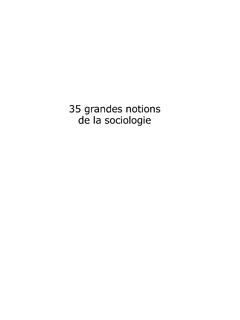Transcription of Circuit Protection Methods - Rockwell Automation
1 Circuit Protection Methods Differentiating between Supplementary Protection , Branch Circuit Protection , and Self-Protected Devices Introduction Modern electrical equipment continues to increase in complexity and importance in industrial, commercial, and residential installations. This equipment is often considered critical for normal system operations. As such, the importance of Circuit Protection and overall equipment Protection continues to increase and is an important topic to understand. Determining whether a Circuit is adequately protected can require a high-level view of the electrical distribution system, from the fault current available at the source of supply down to the end device connected in the system. Circuit Protection includes Protection from equipment overload conditions, undervoltage and overvoltage conditions, ground faults, and short circuits. Although mandated by code for any electrical installation, the proper implementation of Circuit Protection products can be confusing at times.
2 Occasionally this confusion results in Circuit Protection products that are installed in circuits where their use is not appropriate. From a machinery design standpoint, system engineers and equipment designers must choose appropriate protective devices to maintain the safety and reliability of their products. Circuit Protection devices protect expensive systems by rapidly disconnecting power to components in the event of an abnormal operating condition. Even though guidance exists in the form of the various electrical codes, the wide variety of product offerings can make the proper selection of Circuit Protection devices a challenge. An understanding of Circuit types and Circuit Protection products is critical to achieving their proper application. Products that are addressed in this white paper include Circuit breakers made in accordance with UL 4891, supplementary protectors made in accordance with UL 10772, and manual motor controllers as defined in UL 5083.
3 Application and product use is explained as suitable for North American installations. History In the United States, the National Electric Code (NEC) exists to guide electricians in the proper installation of electrical equipment and defines the specific requirements for Circuit The focus of the NEC, which is a code that is developed by the National Fire Protection Association (NFPA 70), is primarily fire prevention. Circuit Protection is required to help prevent fires from occurring due to overcurrent faults or short circuits. In Canada, the Canadian Electric Code (CEC) exists to provide similar guidance. Other areas of the world have equivalent country or local codes. In Europe, IEC is the most familiar guiding organization, but there is also VDE of Germany, KEMA of the Netherlands, and SEMKO of Sweden. Each of the regulatory bodies or testing agencies can be recognized as the guiding body for a specific geographical area.
4 They define performance criteria and proper use of electrical equipment and components in a given location. More importantly, they provide independent verification of manufacturers' self-certification of products to the various IEC standards. Much of the confusion that is associated with proper application of Circuit Protection products is related to product use in North American markets. History has shown that there is a certain amount of confusion and misunderstanding regarding the meanings and proper application of Circuit breakers, supplementary protectors, Circuit breakers for equipment, and branch Circuit Protection devices. Some of this confusion is related to the look and function of these devices and the differences in how they can be applied in other areas of the world. It is not uncommon for non-US/ Canada-manufactured equipment coming into the US or Canada to be red-tagged by UL or CSA inspectors because it does not meet the North American Circuit Protection requirements.
5 2 Circuit Protection Methods The different codes for the United States, Canada, and the rest of the world have corresponding and unique definitions for Circuit breakers. A Circuit breaker's primary function is to protect wire. In North America, the term Circuit breaker' generally refers to a device that is a UL 489 / CSA No. 5 constructed device. In other parts of the world, there are other guidelines for Circuit breaker definition. Differences between UL, CSA, and IEC codes reflect the differences in technical definition from country to country. As a result, items that are categorized as IEC Circuit breakers (miniature Circuit breakers or Circuit breakers for equipment) do not always comply with the UL or CSA. standards. Miniature Circuit breakers are common in IEC marketplaces, but in North America these devices are normally referred to as supplementary protectors. This document focuses on North American applications, which are governed by the NEC and CEC.
6 Definitions The following definitions are based on the UL standards: UL 4891, UL 10772, UL 5083 and UL 508A4, and NFPA 705. (NEC2008). They are provided here as a reference. Table 1 - Terms and Definitions Term Definition Available Fault Current The current in a Circuit that would flow if a short Circuit of negligible impedance were to occur at a given point. (AFC). Branch Circuit The conductors and components following the last overcurrent protective device protecting a load. Branch Circuit Protection Overcurrent Protection with an ampere rating that is selected to protect the branch Circuit . For a motor branch Circuit , the overcurrent Protection is required for overcurrents due to short circuits and faults to ground only. Branch Circuit Protective A fuse or Circuit breaker that has been evaluated to a safety standard for providing overcurrent Protection . Device Circuit Breaker A device that is designed to open and close a Circuit by non-automatic means, and to open the Circuit automatically on a pre-determined overcurrent, without damage to itself when properly applied within its rating.
7 In the US, the device must have an approval to UL 489. In Canada, the device must be approved to CSA No. 5. In IEC regions, the approval is to either IEC 60 898 or IEC 60 047-2. Class 1 Circuit A control Circuit on the load side of overcurrent protective device where the voltage does not exceed 600V, and where the power available is not limited, or control Circuit on the load side of power limiting supply, such as a transformer. Class 2 Circuit A control Circuit that is supplied from a source having limited voltage (30V rms or less) and current capacity, such as from the secondary of a Class 2 transformer, and rated for use with Class 2 remote-control or signaling circuits. Control Circuit A Circuit that carries the electric signals directing the performance of a controller, and which does not carry the main power Circuit . Often, a control Circuit is limited to 15 A. Control Circuit A transformer whose secondary supplies power to control Circuit devices only (excluding loads).
8 Transformer Interrupting Rating The highest current, at rated voltage, that a device is intended to interrupt under standard test conditions. Let-through Current The maximum instantaneous or peak current that passes through a protective device. Manual Motor Controller An electrical device suitable for the switching on and off of motor loads. Manual motor controllers must meet the (with disconnect rating)(1) requirements of UL 508, pass the additional dielectric voltage withstand test (specified in UL 508) following the appropriate short Circuit test in that standard, and pass the extended mechanical operations test as specified in the endurance test of UL 508. Manual motor controllers that carry a motor disconnect rating must be marked suitable as motor disconnect . For a motor disconnect rating, the operating means of a manual motor controller shall be provided with a method of being locked in the off position.
9 Miniature Circuit Breaker Originally this term was for a product that met the requirements of IEC 60 898 or IEC 60 947-2, was DIN rail mounted (MCB) and no wider than 25 mm per pole. Today MCBs can also refer to devices that also meet North American standards such as UL 489, UL 1077, CSA No. 5, and No. 235. Given that broad scope it is important to understand the intended application requirements and regional standard that is required. Circuit Protection Methods 3. Term Definition Molded Case Circuit Originally this term was for a product that was manufactured from a molded material and intended that all Breaker (MCCB) (electrical) moving parts were contained within the housing as opposed to an Air Circuit Breaker (ACB) where the (electrical) moving parts are not contained within an enclosure. In the US, the devices conform to UL 489, in Canada conformation is to CSA No 5, in IEC regions the standard is based on IEC 60 947-2.
10 Supplementary A device, typically either a supplementary fuse, or a supplementary protector (see below), intended to provide Protection additional Protection subsequent to branch Circuit Protection . This device has not been evaluated for providing branch Circuit Protection . The purpose of supplementary Protection is to provide additional Protection for a given piece of electrical equipment - it does not serve as branch Circuit Protection . Supplementary Protection can be provided by fuse (rated as supplementary Protection ) or by a supplementary protector. Supplementary Protector A manually resettable device that is designed to open the Circuit automatically on a pre-determined value of time versus current or voltage, within an appliance or other electrical equipment. It can also be provided with manual means for opening or closing the Circuit . The primary function of a supplementary protector is to protect equipment.
















